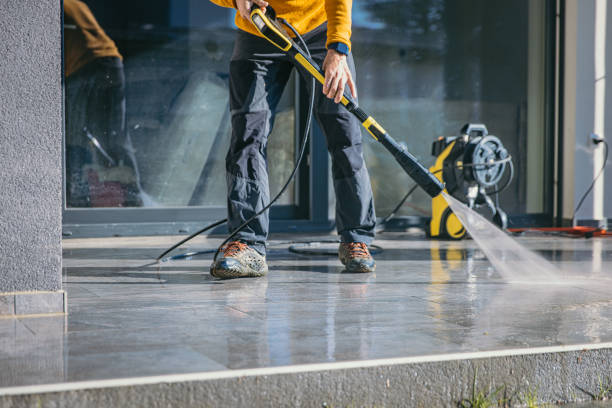Pressure washing is not just a method of cleaning; it’s a transformative tool that can rejuvenate and elevate the appearance of any property. With the ability to restore surfaces to their former glory, pressure washing is an essential technique for homeowners and property managers looking to enhance curb appeal and maintain the value of their investment. This article explores how pressure washing can take your property from drab to fab, highlighting its benefits, techniques, and tips for achieving outstanding results.

1. The Impact of Pressure Washing
Over time, surfaces around your property can accumulate dirt, grime, mold, mildew, and other unsightly contaminants. These build-ups can dull the appearance of your home, driveway, deck, or patio, diminishing its overall appeal. Pressure washing, with its high-pressure water jets, effectively removes these contaminants, revealing a fresh and vibrant look underneath. This not only improves aesthetics but also contributes to the longevity of surfaces by preventing damage from prolonged exposure to these elements.
2. Versatility Across Surfaces
One of the standout features of pressure washing is its versatility. It can be applied to a wide range of surfaces, each requiring a different approach:
- Driveways and Sidewalks: Concrete and asphalt surfaces are prone to stains and grime. Pressure washing can eliminate oil spots, tire marks, and accumulated dirt, restoring them to a clean and welcoming state.
- Siding and Exteriors: Vinyl, wood, and brick survepesu exteriors benefit immensely from pressure washing. It removes mold, mildew, and algae, which can cause discoloration and deterioration over time.
- Decks and Patios: Wooden decks and stone patios often suffer from weathering and stains. Pressure washing helps to clean these surfaces thoroughly, preparing them for sealing or staining if desired.
- Roofs: Pressure washing can extend the life of your roof by removing moss, lichen, and algae that can compromise roofing materials. However, it’s essential to use a gentle approach and lower pressure to avoid damaging shingles.
3. Choosing the Right Equipment
To achieve the best results, it’s crucial to select the appropriate pressure washing equipment and settings. High-pressure washers come in various types, including electric and gas-powered models, each suited to different tasks. For residential cleaning, an electric pressure washer with a psi (pounds per square inch) rating between 1500 and 2000 is typically sufficient. However, for more demanding jobs, a gas-powered washer with higher psi ratings may be necessary.
Nozzles are another key component. Pressure washers generally come with several nozzle options, including 0-degree, 15-degree, 25-degree, and 40-degree nozzles. The choice of nozzle affects the spray pattern and pressure, so selecting the correct one for each task is essential to avoid surface damage.
4. Effective Cleaning Techniques
Proper technique is vital for a successful pressure washing job:
- Preparation: Clear the area of any obstacles and protect delicate items, such as plants and outdoor furniture. Pre-treat heavily soiled areas with an appropriate cleaner and allow it to sit for a few minutes.
- Technique: Maintain a consistent distance from the surface (usually 6 to 12 inches) and use a sweeping motion to ensure even coverage. Avoid concentrating the spray on one spot for too long, as this can cause damage.
- Rinsing: After washing, rinse the area thoroughly to remove any remaining detergent and debris. Inspect the surface for missed spots or areas needing additional attention.
